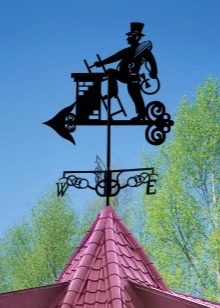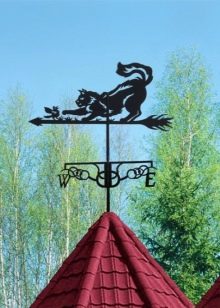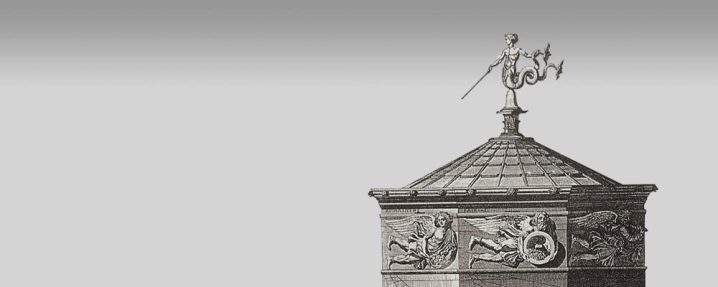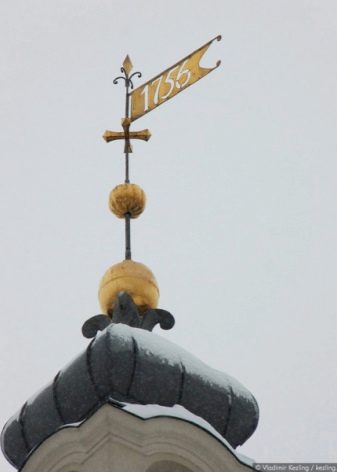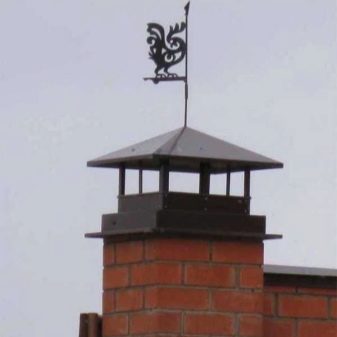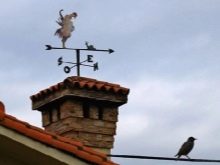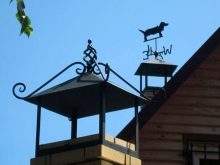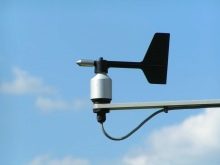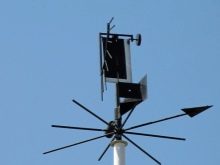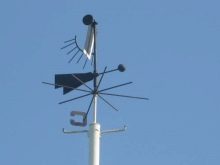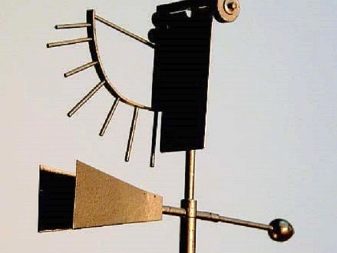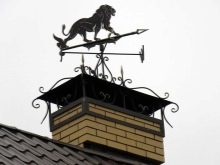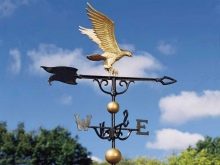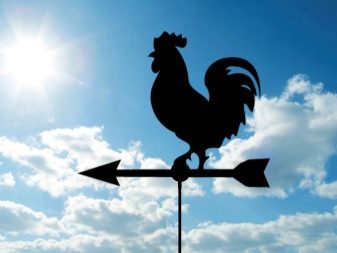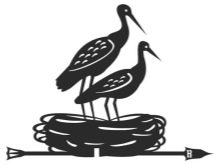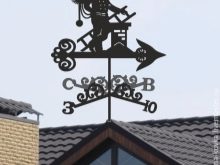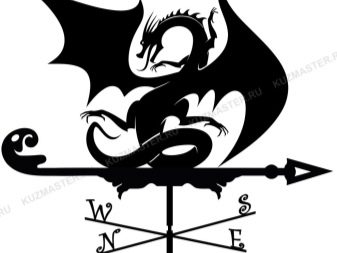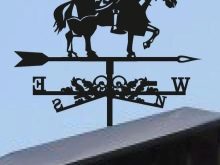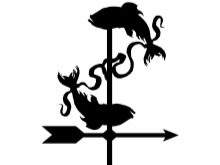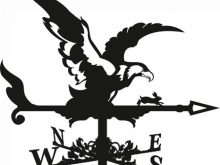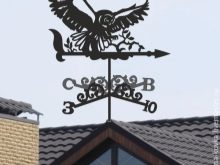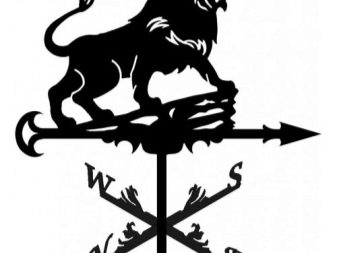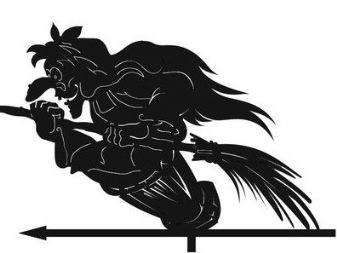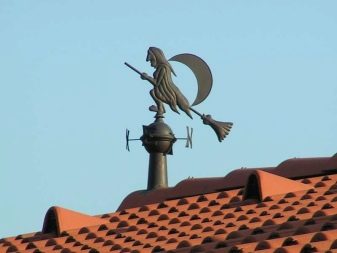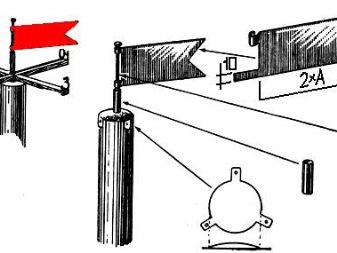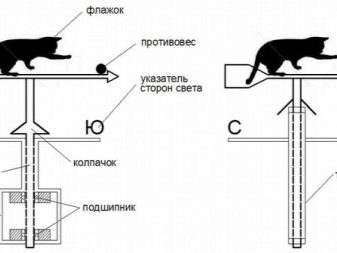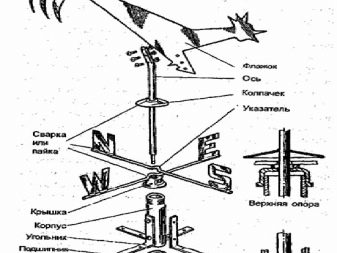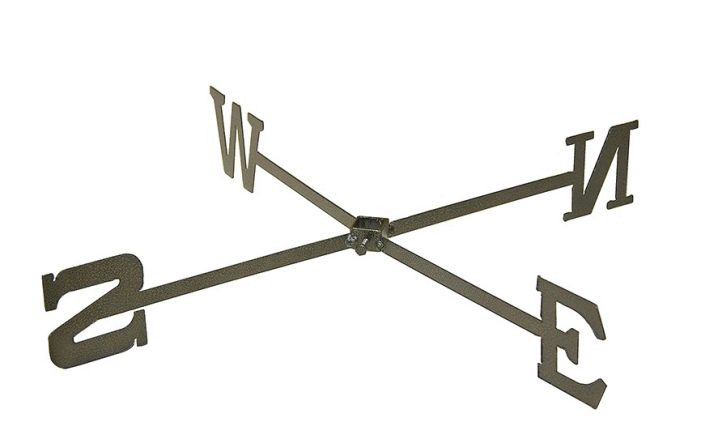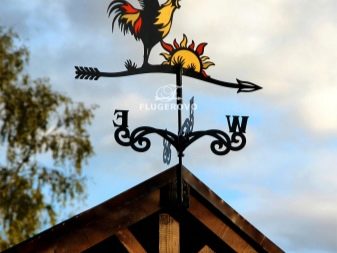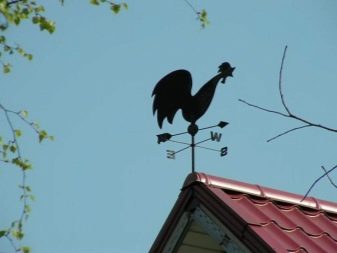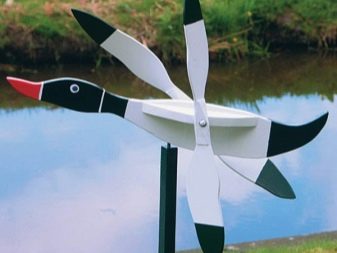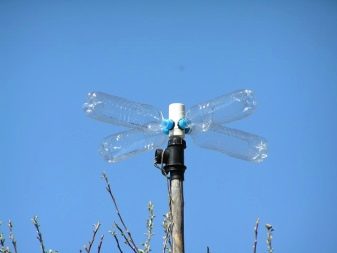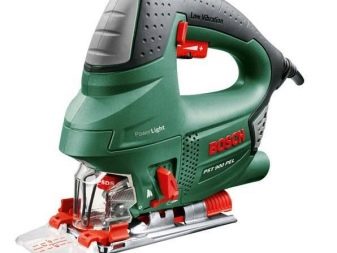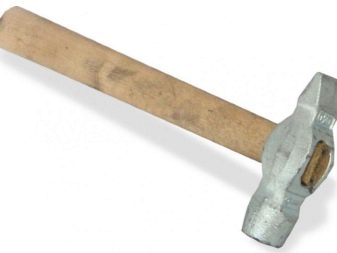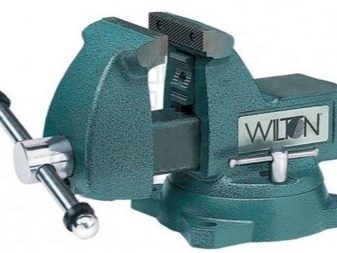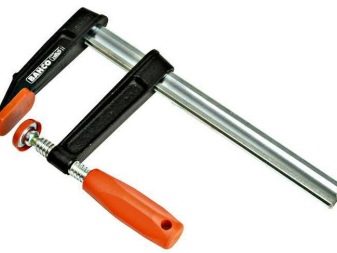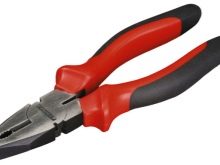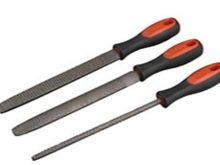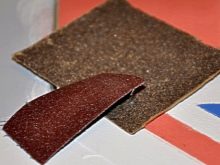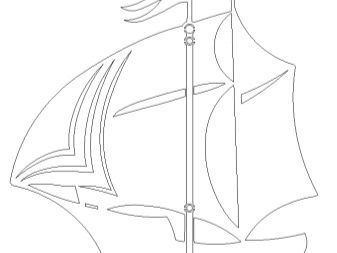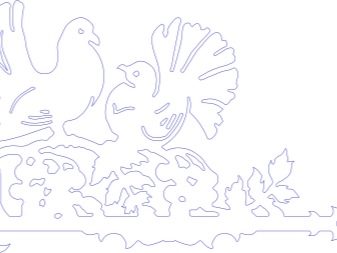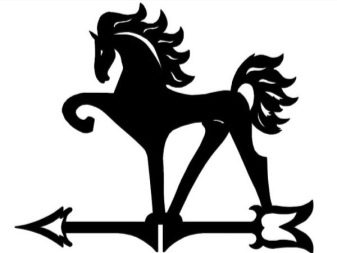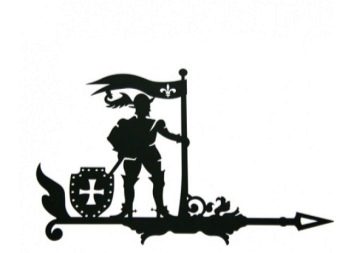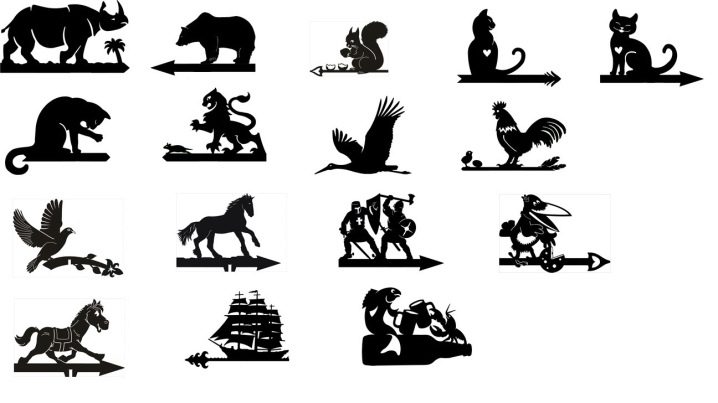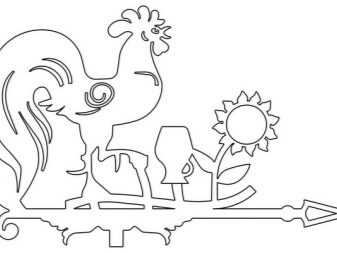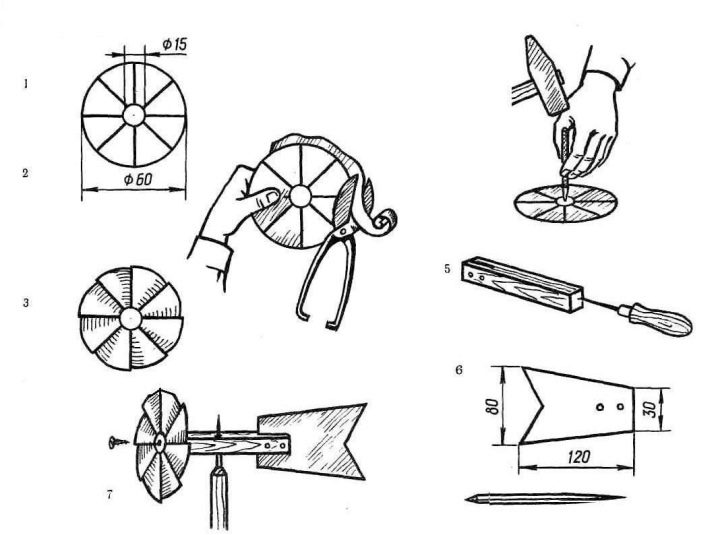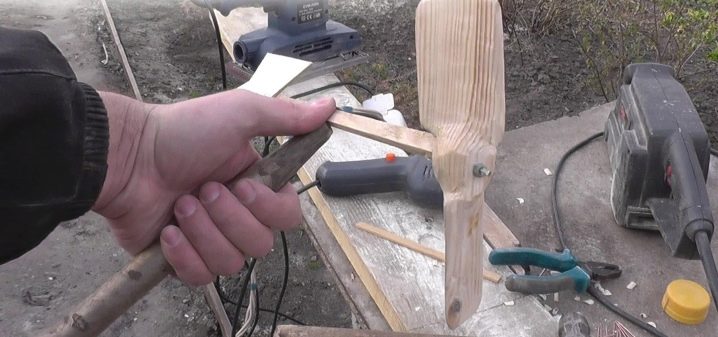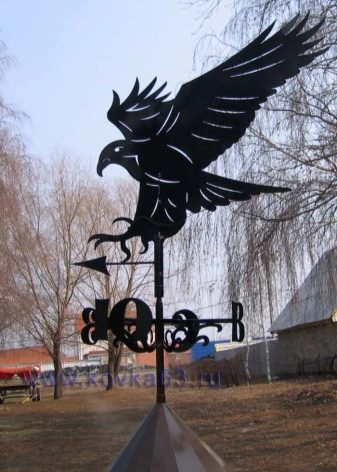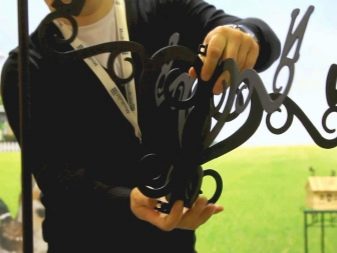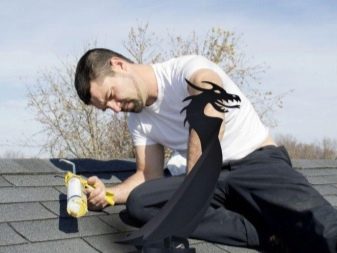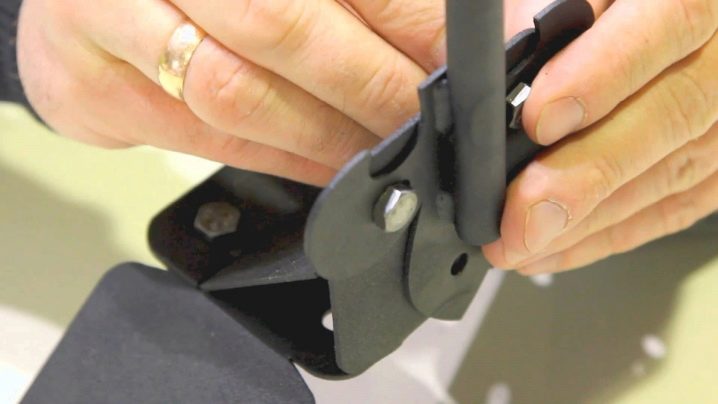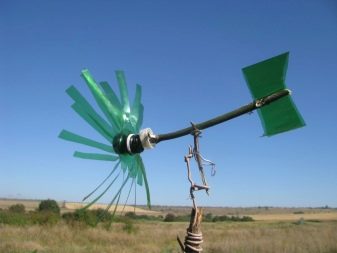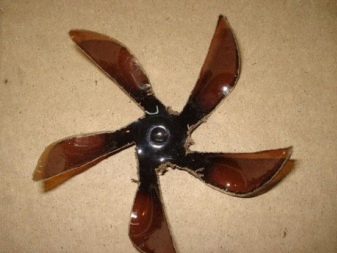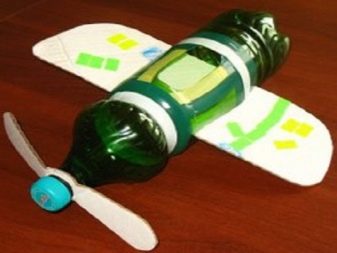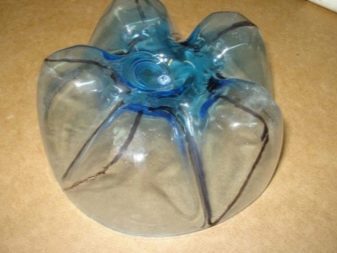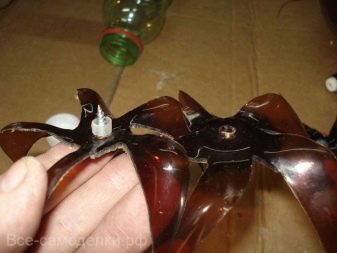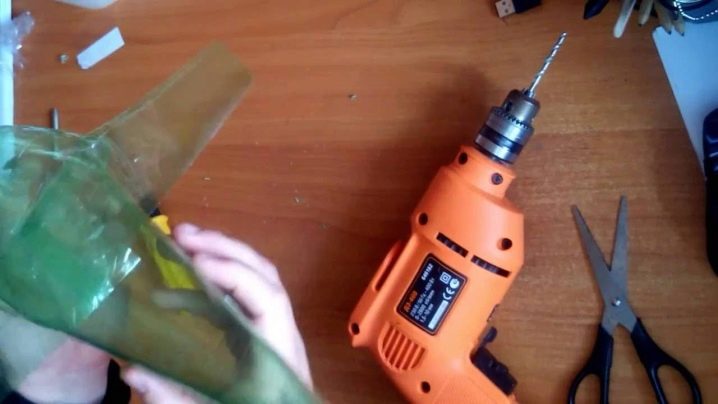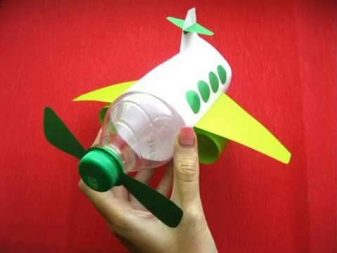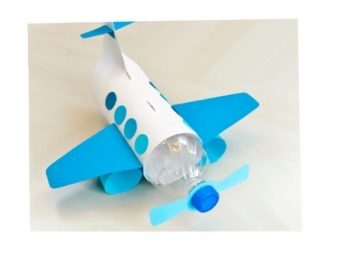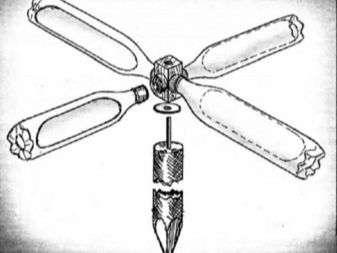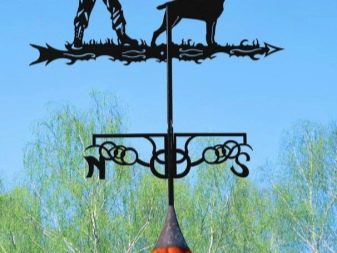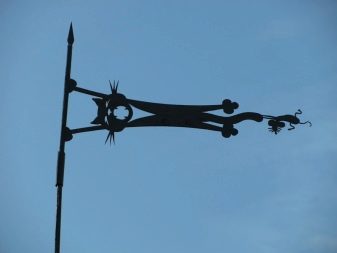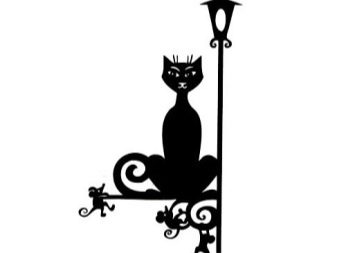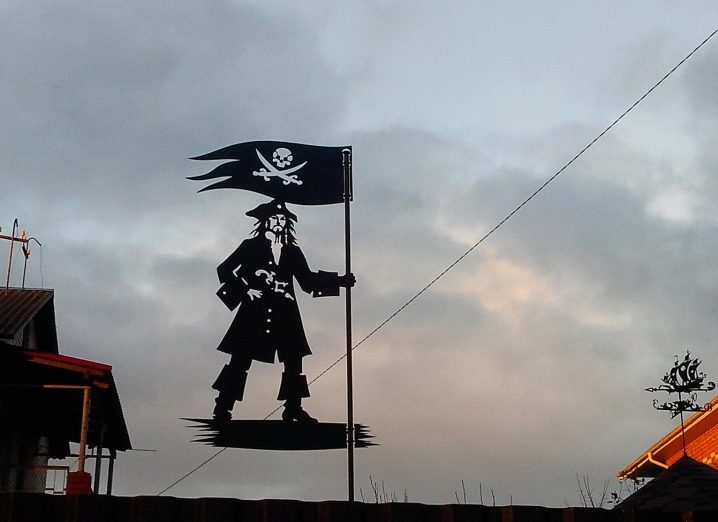Weathervanes for the roof of a private house: from ideas to realization
Weathervane on the roof of the house is established from time immemorial. And now many houses adorn these beautiful devices. If we consider some of the nuances when choosing this product, then you can fully enjoy the presence of a weather vane on your home.
Features and Purpose
Weather vane called the device from the arsenal of meteorologists. It is installed on the roof of the house, often on the roofing part or on the chimney. Frequently weathervanes decorate private houses. This device measures wind force and direction. Now, in the era of modern gadgets, the weather vane seems to be a relic of the past. At home, you can install advanced equipment, and it will more accurately determine both the wind direction and its strength. However, weathervanes remain relevant to this day.Basically, of course, for the sake of beauty, and not for practical purposes. But sometimes technology can fail. And the good old method will not fail.
The history of the weathervane takes us to ancient Greece in the year 48 BC. This design was made in the form of the pagan god Triton. He looks like a mermaid, only masculine. That is, he has a fishtail, and the torso and the head of a man. This weather vane adorned the top of the wind tower. The height of the tower was 12 meters, and its diameter was about 8 meters. The tower was octahedral. Made her supposedly astronomer Kirr. The top of the Tower of the Winds was decorated with images of eight winds - north, northeast, east, southeast, south, southwest, west and northwest. The weather vane, towering on the Tower of the Winds, was 4-8 feet long. He indicated the direction of the wind and which god is responsible for the weather at the moment. The weather vane of the Tower of Winds, unfortunately, has not survived to our days.
Weathervanes often decorated the roofs of houses of noble people in ancient Greece, especially wealthy landowners. But for them the weather vane was also practical. It most often depicted the gods of ancient Greece.
Weathervanes were also popular in the Scandinavian countries, more precisely, among the Vikings. For them, knowledge of the direction and strength of the wind was very important, as they were sailors and often moved on ships. And knowing where the wind was directed helped them in their calculations. Therefore, the weather vane is often located on the ship - either on the nose or on a special pole on the deck. It was made from expensive materials and depicted pagan gods. Only this time the gods were Norse. Later a weathervane decorated the steeples of churches. And these designs have already survived to our days. If traveling around Scandinavia, look at the tops of temples, then you can see this ancient element.
In the Middle Ages in European countries, too, did not forget about weathercocks. The owners of large castles ordered to install them on their roofs. Together with the function of determining the wind, he served as an indicator of what kind of family lives in this house, since the heraldic differences were displayed on the weather vane.
In the Victorian era, the popularity of weathercocks increased more than ever. At this time, they were no longer made by hand and by individual order. There were few such workshops and they did not have time to serve everyone who wanted to purchase this product. Therefore, organized production, which put the manufacture of the weather vane on the stream.After the Victorian era, interest in these structures fell. Their revival occurred only in the 1970s.
Weathercocks are divided into groups depending on their purpose.
- Chimney This weather vane is located near the chimney, more precisely, on the cap of the pipe from it. It prevents the ingress of excess air into the chimney and with a strong wind the products of combustion do not linger in the chimney. This increases the ventilation and chimney draft. Then the fireplace and heating work adequately. Such a device is installed in the presence of a fireplace and helps its proper operation, especially if in the region where the house is built, strong and gusty winds.
- Meteorological. This is a serious and very accurate instrument. It is used to determine the strength and direction of the wind. The process of their manufacture is very laborious and jewelery, so that the indicators are accurate. Correctly such weathervanes are called anemorumbometers. And these devices are installed not in ordinary private houses, but at meteorological stations. To make this device personally is almost impossible without special skills. The wind force measured by this device is measured in certain units - points on the Beaufort scale. This is a 12-point measurement system.
- Weathervane Wilde, or wind. With it, measured by the force of the wind.To do this, a special detail is installed on the vane - a vertical plate that swings from side to side. The extent to which the plate deviates from the zero position shows the strength of the wind flow. It should be noted one feature of this type of weathervanes - the vertical plate often attracts birds, and because of this it ceases to show the real picture of the force of the wind. Therefore, the enterprising owners of such weathervanes install a small propeller instead of a plate. It shows the strength of the wind and scares the birds.
- Decorative. As the name implies, they are installed on the roof, not to show the characteristics of the wind, but solely for beauty and originality. And here the imagination of the owners has no limits. In the form of anyone who just does not make these weathervanes! It is not surprising if they also portray portraits of their masters.
Symbolism
As mentioned above, decorative weathervanes serve as an excellent decoration for the roof of a private house.
Consider the most popular options weathervanes.
- Cock. Probably the most popular weather vane model. The association with the Soviet animated cartoon “The Bremen Town Musicians” arises immediately.But not because of this cartoon the cock is so popular among owners of private houses. In ancient times, the cock drove away various spirits and thieves. The intruders might have thought that the rooster was real and was screaming, warning the hosts. And the rooster is a Christian symbol. He becomes a reference to the apostle Peter. When Peter betrayed Jesus Christ, it was the rooster who sang, and he understood his mistake.
- Stork. This weather vane can often be seen on homes in the Scandinavian countries. It is a symbol of home and replenishment in the family. Of course, for families this is the best talisman. And if you place not one stork on the roof of your house, but a couple or even a whole family, this will bring home prosperity, well-being, respect and love from the children. It is a symbol of the awakening of spring and the birth of a new life.
- Chimney sweep. The figure of the chimney sweep symbolizes the approach of happiness and good changes in life.
- Cat. Symbol of wisdom and fertility. So this talisman will bestow wisdom and give owners long-awaited offspring. Cats love freedom. And this love of liberty also gives its owners.
- The Dragon. The symbol of the dragon immediately takes us to China - the birthplace of dragons. Success in business will be provided by the owners of such a weather vane.And if the dragon is also a pearl, then in addition to material well-being, spiritual prosperity and enlightenment will come. And besides this, he will bestow longevity on his master. In general, the best symbol of prosperity, openness and victory is the dragon on the weather vane.
- Griffin. The image of the griffin itself denotes the combination of two elements: air and earth. Therefore, the owner of this symbol will be confident in their abilities and very powerful. Maybe omnipotence and omnipotence of the griffin will not bring, but confidence in their abilities is certain.
- Witch. If the house is a full bowl and well-being is more than necessary, then it's time to put a witch with a broom on the weather vane. This amulet will protect property and the whole family from the evil eye and from human envy. The word witch comes from the verb "to know," that is, to know. It can also be a symbol of wisdom and knowledge. It will give a mystical shade to a house whose roof adorns.
- Angel. The most important vane angel decorates the Peter and Paul Cathedral in St. Petersburg. The angel is a symbol of spiritual prosperity and the importance of the spiritual component in the life of a family living under the roof of a given house. Most often, this symbol is put believers.
- The rider is a symbol of victory. Usually the winners in battles drove into the city on horseback. Therefore, this symbol carries a similar energy. Symbolizes charisma, authority and respect.
- Fish. This is a positive symbol for the family. It symbolizes a good sex life and a large offspring.
- Eagle. Beautiful and powerful bird. A word associated with him is pride. And the eagle symbolizes protection from enemies, attention to detail. And, of course, justice in affairs and life.
- Owl. The owl symbol is found in ancient Greece. As is known, this is the companion of the goddess Athena herself. And this bird symbolizes boundless wisdom and the desire to possess knowledge. In addition, this bird sees excellently at night in complete darkness and means insight in any business. In this case, an owl weather vane will bring wisdom and insight to the house.
- Dog. It is considered the best friend of man. It is therefore not surprising that the dog symbolizes friendliness, loyalty and devotion. So if a person is by nature open, friendly and loyal, then he can safely put a weather vane with a dog on the top of his home.
- A lion. This is a noble and bold animal.He is called the king of beasts. He is feared and respected. In this symbol, the danger is adjacent to the magnanimity of the winner. So we can say that the owner of the house will be associated with these qualities.
- Baba Yaga. This is a purely Slavic symbol. If in European countries they depict a witch or a witch, then in the territory of Russia and the near abroad is Baba Yaga. Insightful, cunning, sometimes quirky, but always possessing great knowledge. It will perfectly save the owner's house from envy and evil views. Plus will bring the flavor of Russian folk tales in the home.
Before you opt for any image on the weather vane, it is important to know what the history of this symbol is and whether it will harmonize with the mood in the house.
No wonder that our ancestors paid special attention to this. Of course, one should not blindly believe all legends. But in every story there is some truth and it is important not to forget.
And when you bring a bit of history into your house, this place becomes even more special and important for each family member.
Design and principle of operation
When everything became clear with the images on the weather vane itself, it is necessary to take a closer look at it into parts and see what it actually is and what its principle of operation consists of.
The main components of any weather vane are flag, counterweight, vertical axis and cap.
Let's sort each element in more detail.
- Checkbox This part of the wind vane device ensures its rotation towards the wind flow, and the same part is made decorative and adorns the roof of the house.
- Counterweight. It is located opposite the box. This part of the weather vane is not always set, since sometimes the flag itself performs the role of a counterweight when properly positioned. But if the flag does not function as a counterweight, then it must be installed separately. It is important to remember that the counterweight must be somewhat heavier than the flag. It is necessary that the vane returns to its original position.
- Vertical axis It should rotate easily to determine wind direction. This is achieved through bearings or a metal ball.
- Cap The function of the hood is protection from rain, wind and dust. It is important that the turning mechanism works well and nothing obstructs its free movement. He also sometimes centers the axis in the mechanism of a rotary motion.
- Vertical metal plate. It is not installed on all models of weathervanes.Need this plate in order to determine the strength of the wind. This can be done by observing how much the plate deviates from its original position. There are cases when a lightweight propeller is used instead.
- In order to correctly determine which way the wind blows, many install on the weather vane wind rose. It shows the direction of the cardinal points - north, south, west and east. And it is not necessary to get a compass for this.
One nuance is important - in a science such as meteorology, the direction of the wind is determined not by the side in which it blows, but from where it comes. Therefore, you can pay attention to this detail in order to be a connoisseur and not be mistaken.
Materials
Weathercocks are made of various materials. Depending on this, they will be divided into several types:
- Metallic. This is the most common option, as it is more durable and will please the owners of the house longer. Sheet steel or copper is used to produce this type of weathervanes. You can buy it ready, and you can order a weather vane in a special workshop according to your own stencil. You can also do it yourself.Of course, the weather vane made by the masters will be much more expensive than the finished weather vane, and the version made by yourself, but it will be better and will show the wind direction more accurately. A flag weather vane will reflect the soul of the owners of the house as accurately as possible, rather than purchased ready-made weather vane.
- Wooden structures. Wood for such purposes is a very fragile material, so it is not necessary to expect that this product will last for a long time. But this design is easier to do on your own, as cutting a tree is much easier than working with metal. But it is important to remember that the tree will need to be covered with a special paint and impregnation, which prevents the penetration of moisture into the product. This, in principle, applies to metal products, but for wood it is especially important.
- Handy materials. The designs depend only on the imagination and ingenuity of the author. These weathercocks are made from plastic, and from used and outdated CDs, even plastic packaging from under drinks is used.
Tools
The list of tools with which you can create your masterpiece is small.A small difference will be only in what material the weather vane will be made of - wood or metal.
It is necessary to prepare.
- Jigsaw. It is necessary to consider that it is necessary to take different nozzles depending on the material with which they will work. This tool will be needed to cut the structure itself and its decorative part.
- Drill and drill to her.
- Soldering iron.
- Hammer.
- The vice.
- Clamps
- Pliers.
- If you make a metal flag, then you will need either files to manually polish the product, or a grinding machine.
- If you have experience with metal, then an anvil, a welding machine, and even a lathe can be useful.
- Sandpaper.
Sketch and Stencil
Before you buy the material and prepare the tool for work, you must determine the shape of the weather vane. This must be done in order to select a stencil, according to which it will be necessary to cut out the flag for the weather vane. If there is no experience with woodwork, and even less for metal, then it is better to sensibly assess your strengths and abilities and not aim at complex structures with a large number of fine details or intricate bends.But still interesting figures will decorate the roof of the roof, so you can try to make a simple, but elegant product.
You can do the cutting and manufacture of the bear - the symbol of Russia. He personifies power, strength and impressiveness. Bear can decorate the roof of the house, besides it is quite simple to manufacture.
If the soul is drawn towards traveling and new impressions, a flying sailboat or a ship will be a symbol of this. Here it is necessary to sweat over various small details. But he will proudly fly sails over the house.
Pigeons are very peaceful birds. They are gentle, quiet and symbolize purity and beauty. No wonder at the wedding just the pigeons are allowed into the sky. This stencil is not as complex in performance as a sailboat. But a certain complexity can make cutting the wings of birds.
It is possible to use a variant of the stencil of a horse. It is a symbol of victory, courage and young prowess. The figure of the horse is not complicated in execution. It only requires accuracy in cutting smooth transitions and lines to make the figure look more realistic.
That over the stencil and making a knight will have to work hard.Many small details and the manufacture of a human figure requires skill and preliminary preparation.
The stencil can be made independently with your own hands. First, on the usual landscape or drawing sheet of A4 size you need to draw the outline of the figure, and then draw it in the real size in which it will be made. For the convenience of transferring a figure from an album sheet to a large sheet, the entire figure can be divided into squares and then transferred to a sheet. It is important to remember that it is for this layout that the decorative part of the weather vane will be cut, so all contours and details must be accurate in order to eliminate the error when cutting.
When the flag stencil is ready, you can impose it on the material from which the figure will be made. It can be a leaf of a tree, and maybe metal. A simple or colored pencil needs to mark the outlines of the figure according to the stencil.
In the manufacture of the flag weather vane, you need to remember what size it can be. This is important for it to function normally. The dimensions of the decorative element are in the range between 300 and 500 mm.If the flag is larger, it will need additional reinforcement, otherwise it will simply break from the wind.
Manufacturing steps
Regardless of the complexity of the decorative part of the weather vane, it is made in the same way.
The most important elements of any weather vane are the body and the vertical axis. If you make them in bad faith, then the vane will have problems with turns, and therefore, its function of determining the direction of the wind will not perform in the right amount. The best option for a durable design is metal bearings mounted on a vertical axis. And the case will protect this design from dust, humidity and other adverse factors. If moisture and dirt will not penetrate into this part of the product, then there is no need for regular lubrication of the bearings, as they will not be exposed to rust and other deformations.
The diameter of the vertical axis of the weather vane is at least 10 mm. If this figure is lower than the stated figure, then the position of the weather vane will not be stable and it can not withstand strong gusts of wind.
The next step should be to determine where the weather vane will be located. On the structure, it is necessary to provide a mount that will be installed on the roof of the house.
Even with the independent manufacture of a weather vane, it would be better to show the stencil and the workpiece to specialists, so that they would appreciate the accuracy and correctness of the calculations. They will be able to evaluate the drawing and correct it, and you can make a weather vane yourself. But the presence of a competent drawing is necessary, otherwise you will have to redo the work, and perhaps start it again.
Step-by-step manufacture of a weather vane do-it-yourself using the example of manufacturing a weather vane-plane with a light propeller.
- The case support for a weather vane can be made of a pipe with a diameter of 15 mm and 120 mm in length. From above you can make a thread to install a cap that performs a protective function. Bottom mounting plates are installed by cooking.
- The bearing is installed inside the housing. You can use two bearings. This will be the best option. In this case, the vertical axis will not hang out.
- The vertical axis can be made of steel bar. The diameter of the axis is determined by the diameter of the bearing race. The length is chosen in each case its own. It is necessary to do this, starting from the finding of fasteners.The main thing is that the flag of the weather vane does not touch them.
- Using a hammer, the vertical axis is tightly and firmly driven into the bearing cages. A cap is installed on top to protect this part of the design.
- The main element of the product is ready. It will provide free rotation of the weather vane. Now it's time for the decorative part of the weather vane. Need to cut a flag. In this case, it is a plane figure. He is very suitable for the propeller. The aircraft can be made either from wood or from metal. It all depends on the desire of the owner of the house.
- The flag is attached to the top of the vertical axis by bolts. It is better to use three bolts to make the mount more secure.
- The next step is the manufacture of the propeller. It is possible to cut a screw from a steel sheet and install it on the nose of the aircraft. You can not cut the trick yourself, but use the propeller from a small fan and fasten it to the design of the weather vane flag. Of course, it is better to use the factory propeller, since it will be virtually silent.
- Now it is time to install the weather vane directly on the roof of the house. If there is a desire and opportunity, you need to install to the base of the weather vane and the wind rose.You can use bolts for fastening, or you can simply weld this part.
Installation
An important part of the manufacture of the weather vane is its installation on the roof of the house. It is necessary to pay close attention to this process, because if you do it illiterately and in bad faith, then the vane can fall and be damaged, and it is good if no people in this case suffer.
There are some of the most popular places for fixing a weather vane to the roof of a house. This may be a chimney, a ventilation pipe or a roof ridge. In principle, it can be any part of the roof, if only the height of the place on which the installation will be carried out was not less than 5 meters from the ground.
Before installing the vane in the design where the bearings are located, it is necessary to place the grease. Next, you need to choose a mounting method depending on the place where the weather vane will be located.
It is convenient to mount the chimney and the ridge of the house with the help of plates welded to the body. If the base for fixing is flat, then you can independently make the flange rounded, and in it make holes for the screws. Further, using welding, install it on the body instead of metal plates.If you plan to attach the device to a vertical pole, you can use clamps to fix the vane.
Universal ready-made fasteners can be purchased, and not to do them yourself. Those fasteners that are cheaper, are designed to be installed on the roof ridge and look like a corner of metal. You can buy and mount more expensive, then it will come with adjustment screws in the kit.
If the wind vane is installed correctly, then with the slightest gust of wind, it will be felt and the propeller will spin.
Simple solutions
If there is no experience and talent for working with wood and metal, as well as money to pay for a master, and you really want to install a weather vane, then simple materials and interesting and original solutions will come to the rescue. It is possible to make a weather vane from plastic bottles. Already this good in every house is enough, and the sleight of hand for this design should also be enough for everyone.
There is a variant of a short-lived weather vane from a single plastic bottle. You can be creative and make it out of several plastic bottles.
Algorithm for making a weather vane from one bottle:
- You need to prepare a few items to make a weather vane.This is a 2-liter plastic bottle, scissors or a sharp stationery knife, a sheet of cardboard and a simple pencil, waterproof paint, adhesive tape.
- The propeller wings are marked on a piece of cardboard. In order not to be mistaken with the mounting diameter of the propeller itself, you can use a cork from the bottle. It is rounded with a small allowance on the inside of the cardboard blank.
- To prevent the cardboard part from tearing, it is necessary to process both sides of the cardboard with adhesive tape from both sides.
- The width of the wings of the aircraft is determined based on the length of the plastic bottle. You can decorate them in any way - to decorate with red stars, you can use different stripes of different sizes and colors, cutting all these parts out of cardboard beforehand.
- Next, you need to take a plastic bottle and in the places where the wings of the aircraft will be installed, make cuts. It is more convenient to do this with a sharp knife. The hull of the aircraft can also be decorated with waterproof paints. Acrylic paints are most commonly used, as they have a high resistance, which is very important for the weather vane.
- The cork is unscrewed from the bottle and the weather vane propeller is attached. After its installation, the cork is screwed back.
- In order to make a real compact cabin, a rectangular, square or round hole is cut in the wing area.
- To make the wings of the figure more reliable, it is also recommended to glue them with tape on both sides.
- In the "cabin" you can seat a toy pilot. Children will be delighted with such a weather vane. And even better to do it with children.
The model of several plastic bottles will be more durable and stronger than the previous version. To invent this model, you will need plastic bottles of 1.5 liters (4 pieces), plastic containers of 0.5 liters in the amount of 2 pieces, a stationery knife, scissors, Moment glue, a screwdriver, 3 pieces of screws 25 * 2, 5 mm, a small cut of plastic, waterproof paint, brush.
Algorithm of action for the manufacture of a weather vane:
- Three plastic bottles with a volume of 1.5 liters cut off the bottom.
- Pencil or marker indicate the contours of the blades. It is best to mark up so that one line runs in the deep part of the bottom and the other on the convex face. It is important to remember that the lines should be somewhat rounded.
- With a sharp knife you need to remove all unnecessary parts of the bottle from plastic.In this place the top of the weather vane is obtained. The other two bottoms of the bottles are treated in a similar manner.
- In order for the propellers of the aircraft to rotate freely and easily, it is necessary to make holes in the center of the part. You can make them as an awl, which is red-hot, and a drill.
- Turntables are made. Now turn on the body of the aircraft. From the piece of plastic you need to cut the wings of the future product. Their size should be 35 * 4 centimeters. Later on the wings, you can install additional turntables.
- On a 1.5 liter plastic bottle, holes are made on both sides in order to install the wings of the aircraft in these places.
- Harvested wings are inserted through these holes. It is important to ensure that the length of the wings of the aircraft on both sides was the same.
- On the other two 0.5-liter plastic bottles, cuts are made on one side to connect all the details.
- All joints need to be treated with “Moment” glue or other superglue. This must be done very carefully.
- When the entire construction with glue has dried, in the bottle located in the center, make a hole under the axis of rotation.
- The edges of this hole are carefully machined with superglue and the axis of rotation is inserted into this hole.
- Again, all parts should dry well.
- In the hole, which was prepared in advance, mounted screw. After that, it is not very tightly twisted in the middle of the tube. This needs to be done with all bottles.
- Corks with screws returned to the bottle.
- For realistic products, you can make the tail of the aircraft from plastic.
- After the aircraft has been assembled, you can decorate it as you like - even with the help of spray paints, even acrylic ones.
Beautiful examples
An interesting and original solution could be a plane with a propeller made of various materials.
There are very elegant options for home weathervanes.
For example, a hunter dog made of metal.
Or such a screaming cat with a mouse. A very nice option that shows that people live under the roof with a good sense of humor.
Captain Jack Sparrow from Pirates of the Caribbean can be purchased. Immediately everyone will understand the favorite movie of the owner of the house.
There are many decisions of weathercocks, each person is free to choose it within his budget and imagination.
How to install a weather vane on the roof, see the following video.

